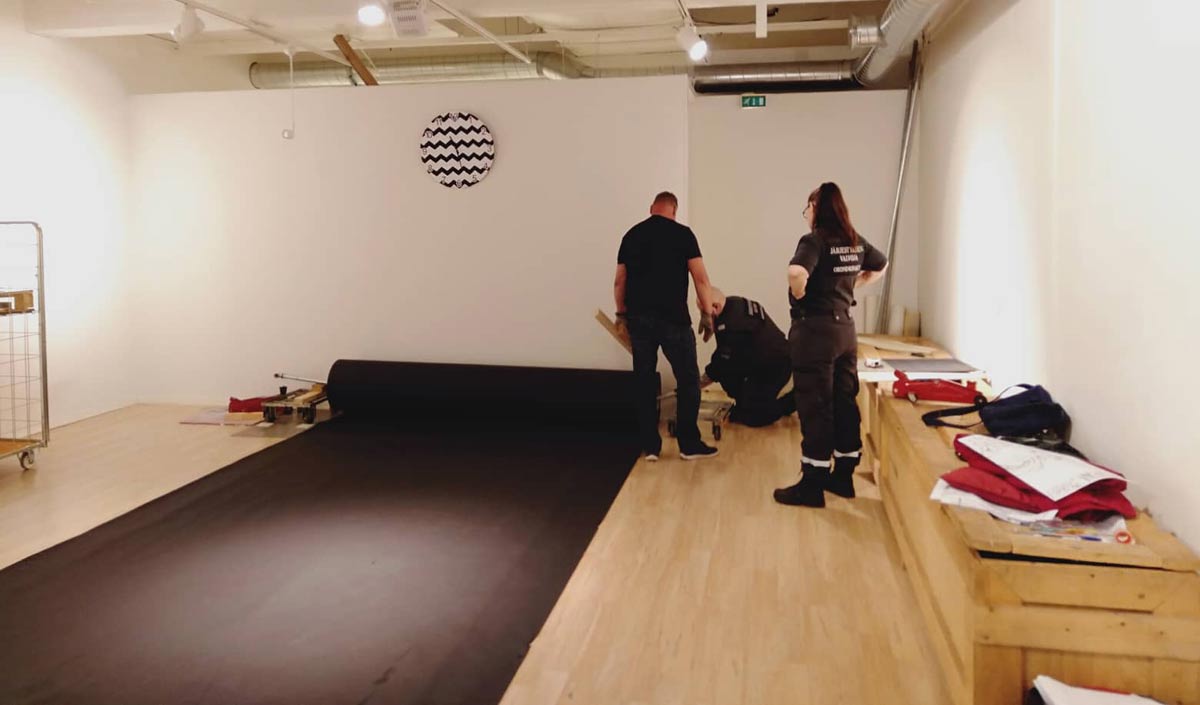Italian Enrico Mazzone at work to create a 1 km-long illustration of the Apocalypse
A kilometer of paper to narrate theApocalypse of St. John: this is the new challenge undertaken by Italian artist, resident in Finland, Enrico Mazzone (Turin, 1982). After completing the longest-ever illustration of the Divine Comedy (a 97-meter-long by 4-meter-high roll of paper, titled Rubedo, which took 5 years of consecutive work, 3 quintals of paper, 6,000 pencils, and is currently touring between Italy and Finland for exhibition), Mazzone started his new venture in May, which will be made on four modules of 250 meters each of paper, with sheets three meters high. The work, in this case, will require 20 quintals of black Vantablack paper, which will be supplied by the Koehler paper mill in Oberkirch, Germany, which will join Mazzone in this venture.
Unlike for the Comedy, for theApocalypse Mazzone has decided to abandon pointillism and veer toward hatching. A new technique, combined with the use of color (Prussian blue), will characterize this classic work that belongs to the books of the Bible, therefore universal for anyone interested in a visionary and symbolic concept of art. The goal will be to finish the first two sections within the next four years, to officially present them in Oulu (Finland), European Capital of Culture 2026. Currently, the first 43 meters of the work have been completed.
A dynamic workmanship that will unfold through a calendar of major events and collaborations. In October 2022, a first exhibition/workshop will be held with the backdrop of the Casina Vanvitelliana in Bacoli, on Lake Fusaro, where educational meetings will be held through midweek visits by students, PON paths at school or in DAD, public and institutional visits. An experience that also intends to create a reference to nearby Procida, Italian Capital of Culture 2022. Some exhibitions with preparatory drawings are also planned.


Mazzone’s reinterpretation of theApocalypse will also touch on the city of Genoa, which is very dear to the artist. The characters of the monumental cemetery of Staglieno will in fact be the protagonists of his reinterpretation of the Johannine text. It was precisely from a visit to the Staglieno cemetery, and from a fortuitous event (a damage suffered by Rubedo that required restoration work and caused a period of discouragement for the artist), that the inspiration forRevelation was born: “I retired to Cogoleto for a few days of rest,” Mazzone recounts, “and accidentally, one day in Genoa I stumbled upon the Monumental Cemetery of Staglieno. With thoughts still fresh from what had happened, I let myself be carried away by the archaic statues and walking between the arches of the first extension I felt a dramatic sense of silence, waiting for the next catastrophic event. I remained frozen but evocatively fascinated when from a distance I noticed a figure that abducted my step, almost labored as I approached: I realized that by giving a form, an image to my emotional cacophony, almost like an epiphany it sublimated the monument that gave birth to the work on which I am working. The dynamic friction of the Pizzorni Tomb statue enraptures the viewer and places him in a condition of submission. The statue, as a whole, is soaring downward, and such a position reminded me of an almost mephitic version of the Nike of Samothrace. It grips and certainly does not go unnoticed, thanks in part to the limestone that etches the personality, making it almost wheeze. Probably through an operation of catharsis, I had the solution to digest and overcome the shock that occurred , giving precisely a strong-toned image of the caducity of the damaged work.”
Mazzone’s work began in March 2021, after an exhibition at Messukeskus in Turku (one of Finland’s leading art fairs), during which Rubedo was displayed in the city auditorium, thanks in part to the support of Honorary Consul Francesco Sturiale. At the same time, within a week, the first sheet from the Koehler paper mill, arrived in Pori, the city where Mazzone has his workshop. Now, the artist continues to work on his new work but already has several events planned, some already on the calendar, others in the pipeline. The goal will also be to create an aartistic and cultural synergy between Italy and Finland, from the Divine Comedy to the Kalevala (the famous Finnish epic poem composed in 1835 by Elias Lönnrot) and right up to the Apocalypse.
 |
| Italian Enrico Mazzone at work to create a 1 km-long illustration of the Apocalypse |
Warning: the translation into English of the original Italian article was created using automatic tools. We undertake to review all articles, but we do not guarantee the total absence of inaccuracies in the translation due to the program. You can find the original by clicking on the ITA button. If you find any mistake,please contact us.





























